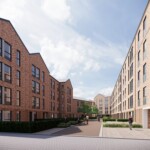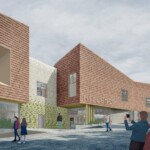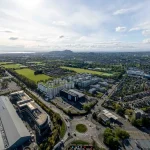Frazer Hay interior architect, Napier University, Scottish projects, Biography
Frazer Macdonald Hay, Edinburgh
Biography for Director Centre for the Recycling and Reuse of Buildings, Scotland
Frazer Hay – Centre for the Recycling and Reuse of Buildings
Biography:
Name: Frazer Macdonald Hay BA (Hons) Int. Architecture; MCSD, PgC TLHE
Job Title: Director – Centre for the Recycling and Reuse of Buildings
Programme Leader – Masters – Int. Architecture
School: Interior Architecture
School of Creative Industries
Napier University
Merchiston Campus
Edinburgh
EH105DT
Scotland, UK
Phone Number: +44 [0]131 455 2679
Background:
Prior to and during the early stages of my academic career I have worked for a variety of creative practices both in the UK and in The Netherlands:
Wallpaper Magazine http://www.wallpaper.com
Richard Murphy architects http://www.richardmurphyarchitects.com
Oliver Chapman Architects http://www.oliverchapmanarchitects.com
TPS consult http://www.tpsconsult.co.uk/tps/default1.asp
EMBT/RMJM architects http://www.rmjm.com/index_flash.php
The Netherlands:
Hubert Jan Henket Architects http://www.henket.nl/]
Whilst working with the above practices I have worked on a range of small and large scale projects, from small extensions in Edinburgh to spending 2 years as part of the design team for the New Scottish Parliament Building.
Membership of Professional Body/Associations/External Activities
Associate Member C.S.D [Chartered Society of Designers] http://www.csd.org.uk/
CPG [Scottish Parliament: CROSS PARTY GROUP on ARCHITECTURE and the BUILT ENVIRONMENT ] http://www.scottish.parliament.uk/msp/crosspartygroups/groups/cpg-arch.htm
SEDA [Scottish Ecological Design Association] http://www.seda2.org
IFS [Interiors Forum Scotland] http://www.interiorsforumscotland.com
IFW {Interiors Forum World}
http://www.interiorsforumworld.dpa.polimi.it
Exhibitions:
[Re]cycling structures Exhibition
12th June -10th July 2008
157 Buchanan Street, Glasgow, Scotland
[Collaboration between Urban Splash & Napier University’s C.R.R.B]
Thinking “Inside” the Box [International EXHIBITION] http://www.interiorsforumscotland.com/index.htm
The Lighthouse, Scotland’s Centre for Architecture & Design
Summer 2007
Exhibition of Scottish Creative Talent
Public Exhibition:
RSA [Royal Society of Arts]
Princes Street, Edinburgh, Scotland
Summer 2005
&
Summer 2004
Competition:
Architectural Heritage Society of Scotland runner-up award 2002…
RIBA, Panoptican Competition 2003.
RIBA, London Kiosk Competition 2003…
D&AD Environmental Design 2005 [Winner]
RIBA, Kilder Forest Observatory Competition 2006
Bentley, International educator of the year [shortlsted] 2006
Bentley, International educator of the year [shortlsted] 2008
Member of Editorial Board for:
http://www.e-architect.com
https://www.edinburgharchitecture.co.uk
https://www.glasgowarchitecture.co.uk
Member of ECIA [European Council of Interior Architecture] Education Committee http://www.ecia.net/?page=999&spage=8
International Teaching:
Oslo Norway [Norge Kreative Fagskole]
Stavanger Norway [Norge Kreative Fagskole]
Delft, the Netherlands [Delft TU]
Antwerp Belgium [ARTESIS HOGESCHOOL]
Research:
Dutch Design & Architecture / Living Space [Book in Progress]
“Living Space” An exhibition in Scotland and The Netherlands.
The key objective is to produce a publication in conjunction with a series of exhibitions both in Scotland and in The Netherlands which explores the Juxtaposition of the two countries in regard to their approach of design and architecture on a domestic scale.
Invited Reviewer:
IFW Conference Milan & Publication ISBN 978-88-464-9975-2
http://www.interiorsforumworld.dpa.polimi.it/
The Politecnico di Milano, in collaboration with the PhD course in Interior Architecture and Exhibition Design will be convening the first I.F.W. conference themed
PLACES AND THEMES OF INTERIORS CONTEMPORARY RESEARCH WORLDWIDE
Politecnico di Milano, Italy
A thematic conference that reflects critical, theoretical, educational and practical experiences in three macro areas of the interiors.
Domestic | Exhibition Design | Retail
The broad conference theme of the three areas explores the concept of Who? Where? and What? in the context of contemporary research and future visions around the world of the interiors discipline.
The conference will bring together academics, scholars, students, practitioners, thinkers, researchers, organizations and whoever is passionately involved in the interiors discipline. Experts and professionals who are specialized in social sciences, humanities or economics that are involved in the interiors discipline are also welcomed to participate to the conference.
IFS “Tools &Tactics” International Conference and Publication
2008
The Lighthouse, Scotland’s Centre for Architecture & Design
http://www.interiorsforumscotland.com/index.htm
IFS Co- Founders & authors:
Frazer Hay, Interior Architecture, Napier University, Edinburgh
Drew Plunkett, Interior Design, Glasgow School of Art
Andrew Milligan, Interior and Environmental Design, Dundee University
John Gigli, Interior Design, Glasgow Metropolitan University
Ed Hollis, Interior Design, Edinburgh College of Art
Conference Aims
‘Interior Tools Interior Tactics’ aims to bring together an international interior community of advocates, academics, researchers, practitioners, design organisations and design policy makers who wish to shape the future tools and develop progressive tactics for interiors practice, education and research. Keynote addresses from leaders in the field of interior practice, interior research and interior education will stimulate debate.
The format for the event aims to challenge conventional conference delivery and the organisers are especially keen to receive proposals around the conference theme which engage audiences and provoke debate. The Interiors Forum Scotland welcomes initial enquiries and seeks formal registrations of interest from the diverse field of interior inquiry: from those involved in interior design; interior architecture; interior decoration; interior history; interior teaching and other interior environmental contexts.
Interior Tools Interior Tactics’ will offer delegates opportunities to network, establish collaborative research relationships, participate in exploratory theatres of thinking, particpate in workshops and interactive presentation sessions, and to reflect, explore, debate and share the innovative tools and diverse tactics deployed across interiors academe, practice and research. It will provide a forum for educators, industrial practitioners, researchers and graduate students to discuss current issues affecting the nature and direction of interior design practice, education, policy and research.
Key Note Lecture: The Bentley Community (UKI)
Key Note Lecture: BENTLEY COMMUNITY (UKI) EDINBURGH CONFERENCE 2007
28 SEPTEMBER 2007
Title: A user’s experience, working with Bentley
Construction in the new digital era is an exciting process where a balance between utility and the designer’s philosophy can be achieved.
Due to the evolution of computers and in particular 3d modelling, architecture has been revolutionised in terms of its exploration of an architectural philosophy and the resulting aesthetic. In an environment where all seems possible, the designer can digitally create all manner of forms and experimental structures whilst exploring the latest materials and technology. The Interior architecture requires the same degree of design intent and exploration expressed in the creation of the exterior. The students are encouraged to achieve a high level of competence in this key aspect of architectural expression.
IDEAS Journal 2007
Discussion paper
Title: Interiors Forum Scotland
[ISBN: ISSN 1445/5412]
Abstract:
Interior design operates across diverse spatial frequencies and increasingly broad conceptual bandwidths from the overtly architectural to the decorative. It resists the reassuringly narrow categorisations other disciplines cherish. Whilst interior design is an exceptionally broad spatial field, this field is also open territory for others to occupy and claim as their own, but in what ways are interiorists reclaiming and redefining this field?
This paper describes the emergence of the IFS, the Interiors Forum Scotland . It describes the IFS’s first international interiors conference, ‘Thinking Inside the Box: New Visions, New Horizons, New Challenges’, held in the Lighthouse, Scotland’s Centre for Architecture, Design and the City in March 2007, published theory reader and forthcoming conference in Edinburgh 2008.
This paper provides a review of the main outcomes, emerging issues, and diverse themes from a selection of conference papers from an international group of educators, researchers, authors and practitioners from the UK, Italy, USA, Turkey, Australia and New Zealand amongst others. The role of the cross institutional group the IFS, its aims, objectives and future relationship within the newly established UK Interior Educators Council and international Interior Design / Interior Architecture higher education organisations will be discussed.
Keywords: frequencies, interiorist, research networks, interiors forum Scotland
http://www.idea-edu.com/pdf/IDEA2007.pdf
http://www.idea-edu.com/abstracts.htm
“Thinking Inside the box” Publication
ISBN-10: 1904750222]
Publication Title: Thinking inside the box
Publisher: Middlesex University Press
Commissioning Body: Lighthouse / Middlesex University
Thinking Inside the Box is a reader designed to help students, academics, thinkers and practitioners of interiors do just that. Thinking Inside the Box is a collection of essays by prominent thinkers in the field of interiors, from Mark Taylor, co-author of ‘Intimus’ to Shashi Caan, the practitioner, and former head of interiors at Parsons, the new School of Design in New York.
They address themes ranging from cushions, curtains, and feminism to the relationship between the interior and the enclave in the contemporary age of terror; from the regulation of the profession of interiors to the representation of the interior on the page, and in history.
This diverse reader is simply and clearly organised into four main sections:
• What is interior design? – Debates on the identity, the profession, and the regulation of interior design
• Why do we do interior design? – Essays on the relationship between theory and practice in interiors
• Histories of interior design – Stories from the practice of interiors and meditations on the history of the discipline
• How do we teach interior design? – Case studies from, and reflections upon, the education of the interior designer.
Thinking “Inside” the Box International Conference
2007
The Lighthouse, Scotland’s Centre for Architecture & Design
http://www.interiorsforumscotland.com/index.htm
Reflections on Thinking Inside the Box 2007
In March 2007 the Interiors Forum Scotland, in collaboration with the Lighthouse, Scotland’s Centre for Architecture and Design, Glasgow, hosted a unique two day international conference. The unifying theme of the conference was: Thinking Inside the Box: New Visions, New Horizons & New Challenges.
The event included presentations from keynote speakers, researchers and industrial & academic practitioners, an accompanying exhibition and published interior reader in November 2007. An international audience from the UK, Australia, Italy, New Zealandy, USA, Turkey, Netherlands, Norway and elsewhere contribited to an intense two day conference.
The IFS also collaborated with the UK Interior Educators Council and contributed to the developing educational agenda along with international guests from interior research organisations from the USA, Australia, New Zealand and Scandinavia. Conference presentations were divided into simple themes, and the conference abstracts are available here.
The programme included a brief introduction from the Interiors Forum Scotland, followed by the first of two keynote speakers; a double act between co-authors Graeme Brooker and Sally Stone, Manchester Metropolitan University, UK. From Organisation to Decoration. The programme for day one explored the theme of What is Interior Design?
Title: Interior Architecture
ISBN: [ISBN-10: 1904750222]
Interior Architecture is a part of a larger group of professionals referred to by Tony Fretton [Chair of Architectural and Interior Design, Technical University of Delft, the Netherlands] as “The Interiorists” which primarily comprise of: Interior designers, interior decorators, interior architects, exhibition designers, lighting designers, stage designers and architects.
Although part of a relatively new “Interioreist” movement Interior Architecture has strived for a recognized identity and method of approach whilst creating successful spatial solutions to a brief,
“Interiors are the transformation of a building – from distant, gleaming object into a rich experience of spaces, resonances, light. The interior is where a building embraces a person”.
Interior Architecture is the spatial manipulation of an existing building whilst engaging with its structural DNA, history, context, orientation and proposed programme.
Publication Title: Thinking inside the box
Publisher: Middlesex University Press
Commissioning Body: Lighthouse / Middlesex University Press
Tectonics-Making Meaning
Eindhoven University of Technology
Department of Architecture, Building and Planning
www.tectoncis2007.com.
Title: Systems to Recycle Buildings & Understanding the Buildings DNA
[ISBN: 978-90-386-1186-0]
Is surgery then the answer? If humans grow week or become ill, break something or require enhancement they visit a doctor or surgeon. These professionals that understand our structural makeup and internal matrix, remove, replace, reconstruct and augment our body parts to improve and extend our life expectancy.
Structural surgeons are required to address buildings that no longer work properly or have become old, week and disabled, surgeons that understand their structural make up and capable of biomechanics, bionics, or even plastic surgery in an architectural sense.
Napier University’s Interior Architecture programme is developing a more medical approach to Architecture and in particular its approach to recycling existing buildings.
An environmentally friendly alternative to building new sustainable / durable buildings is to recycle the buildings we already have. Recycling buildings can be an exciting dynamic way to breathe new life into our tired and strained cities. New-build construction consumes enormous amounts of energy and resources in comparison to recycling original structures, which although labour intensive is not capital expensive and in fact attracts financial incentives and tax breaks.
In order to recycle our existing structures successfully, a set of methods or systems need to be adopted to make the most of this architectural approach to sustainable building.
Accommodating new Aspects of Interdisciplinarity in
Contemporary Construction Teaching
School of Architecture, University IUAV Venice, Italy, 23-25 November 2006
Interdisciplinarity-simulation/environmental controle-costruction-construction pedagogy
Title: Systems to Recycle Buildings & The Interdisciplinary Nature of Interior Architecture
[ISBN: 2-930301-31-7]
These systems depend on the architect’s analytical ability to convert the host building’s structural information. This information is a lot like our human DNA in that it dictates character, build and physical ability.
Fourth EAAE-ENHSA Construction Teachers Sub-network Workshop
(Re)searching and Redefining the Content and Methods of Teaching Construction in the New Digital Era
School of Architecture, ETS Arquitectura del Vallès, Universitat Politècnica Catalunya, Barcelona
Spain, 22-24 September 2005
New content, new subject areas and new techniques seem to be necessary knowledge for the profile of contemporary architects and which students, at the time of their graduation, ought to possess in order to survive in a particularly tough professional realm.
Title: Illuminating the Utility and Philosophy Collision
[ISBN 0-7506-6674-9]
“The necessity to become a little mad is not part of an architectural education. To dare to put forward ideas, to offer up visions to realise the unexpected requires pushing the imagination. But how crazy should we get? Not too much: people still have to use the costly stuff that we produce. Not too little: lets be less boring in the future.
The architectural imagination is a combination of utility and philosophy. It responds to specific needs and situations, but keeps in mind that architecture is also a thought about how we want to live in our world. These two, utility and philosophy should not drift apart. The secret is to unify them and to always let them be mutually enforcing” (1)
There are many areas of architecture where utility and philosophy collide. Of particular interest is how we perceive and execute the service interfaces that collide regularly throughout a construction project. Is it possible to develop a method and detailed understanding which can be employed to address all elements of architectural integration whether its fire detection systems, ventilation systems or lighting?
An area that involves some of the most diverse detailed interfacing is the integration of lighting into the design of the interior. Lighting can appear in virtually any context architecturally [for example, recessed within fair-faced concrete or suspended from timber vaulted ceilings]. Practical issues then surface as to requirements for cabling, ventilation, and access for servicing. Aesthetic issues also arise: how is the lighting in keeping with the architectural design intentions e.g. are the fixings concealed? Is the luminaire colour the correct RAL No? Are the luminaire to be fixed flush to the host surface?
Design and service industries
Book Chapter [Design]
[ISBN: 0-7506-6674-9]
Design is a delicate process of question and answer, action and reaction whilst identifying practical and aesthetic issues now and in the future.
Without creativity there would be no progress, and we would be forever repeating the patterns [Edward de Bono]
Hotel Design and Creative manipulation is a complicated and lucid combination of sensitivity and imagination that is woven seamlessly within architectural and economic parameters, which in turn are set by social and cultural demands past and present.
There are several questions to consider when tackling a hotel project:
Who is the clientele? What does the clientele want? What does the clientele need?
What does the building want to be? Is the project a ‘new build’ or has it history to tell? Should this influence our design solutions?
Who Built the building originally and for what use.
What does a hotel need to be? How does this relate to the building?
How can you address this hotel design in ingenious and unexpected ways?
How does the context influence your dissensions?
Do Hotels and other social spaces provide a respite from public life?
Do hotel spaces represent a cross-section of our society of recent years?
Some are born of tastes already formed, others suggest using space in the way we normally find in the home; some seem to date further back, others still need to find their place in the grand scheme of things (socially speaking). But they all reflect the lives of the people frequenting them, who have decreed their success or failure according to their virtues or weakness, who have positioned them in the spaces or urban life as an oases and sanctuary, as small monuments of everyday life.
Design helps to identify, divide or individualise each hotel or chain of hotels, the way that the designer creates an experience whilst practically facilitating all the needs of a varied and demanding clientele is key to a successful hotel design, be it traditional, mainstream, original, designer or a new build hotel of architectural significance it is essential to create space and environments that remove the guest from their everyday life and provide an experience, which can manipulate feeling through well refined methods.
Further Education
Masters in Conservation Architecture
ECA (Edinburgh College of Art)
In the face of the inexorable forces of cultural globalisation, architectural conservation is becoming increasingly important as a way of helping nurture local, regional, and national identity. This programme is conceived as a broad introduction to the knowledge, values, skills, and experiences of architectural conservation – including the broad ethical and conceptual background as well as the technical and hands-on practical aspects.
Edinburgh Building Designs
Contemporary Edinburgh Architectural Designs – recent selection from this website:
Scottish National Portrait Gallery
Comments / photos for the Frazer Hay Edinburgh Architecture page welcome


